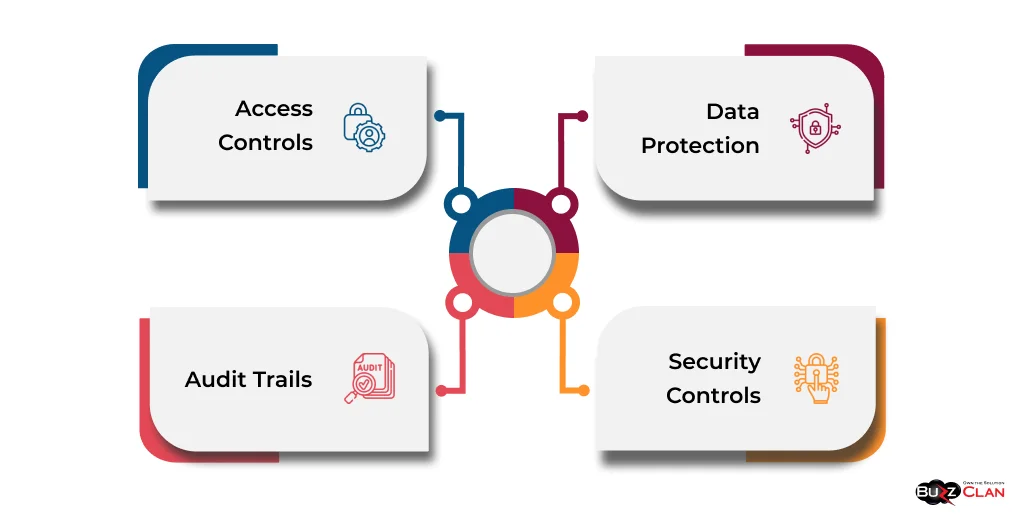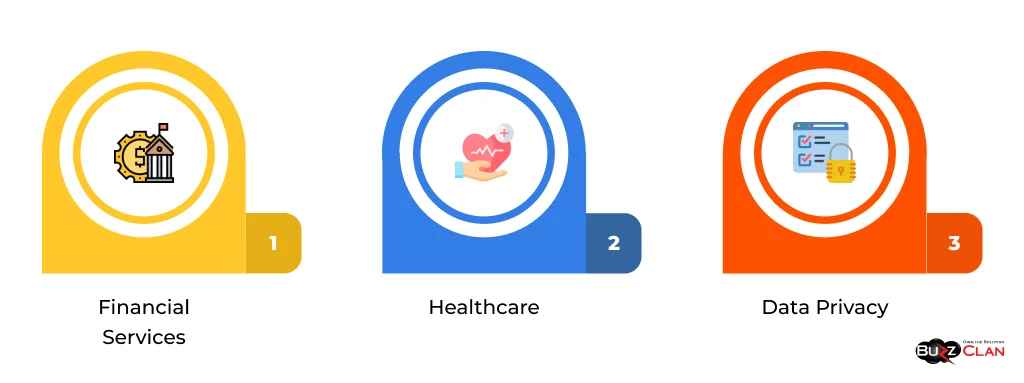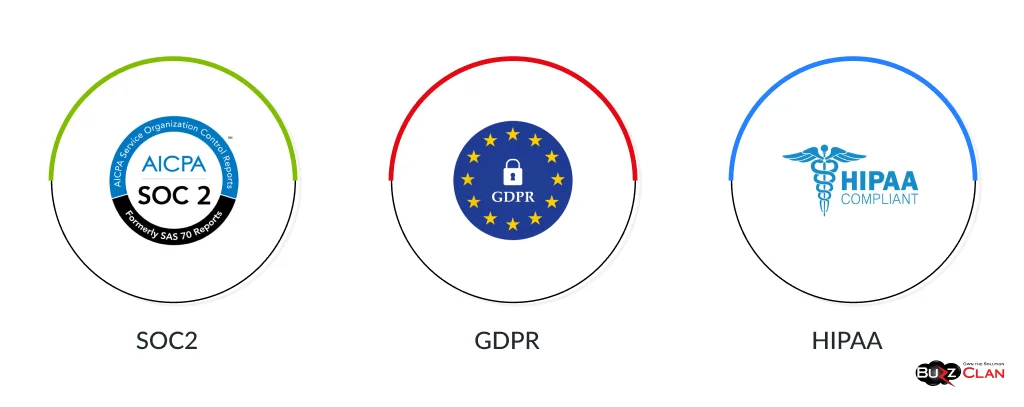Software Compliance in the Digital Age: Protecting Your Business and Building Trust
Deepa Desai
May 24, 2024
Introduction
Software compliance has become a critical concern for today's digital landscape businesses. With the increasing reliance on technology and the handling of sensitive data, organizations must ensure that their software systems adhere to various legal, regulatory, and industry standards. Failing to comply with these requirements can lead to severe consequences, including legal penalties, financial losses, and reputational damage.
Software compliance refers to ensuring that software applications and systems meet the standards, regulations, and guidelines governing bodies and industry authorities set. It involves implementing processes, policies, and controls to ensure software aligns with the specified requirements throughout its lifecycle.
Software compliance is important across various industries, such as healthcare, finance, government, and retail. Organizations must fulfill Each sector's compliance obligations to operate legally and ethically. For example, healthcare providers must comply with HIPAA regulations to protect patient privacy, while financial institutions must adhere to PCI DSS standards to ensure secure payment processing.
Understanding Software Compliance
Software compliance encompasses various standards and regulations that organizations must follow. These standards often focus on data privacy, security, and integrity. Some of the key concepts in software compliance include:

- Data Protection: Ensuring that sensitive information is collected, stored, and processed according to relevant privacy laws and regulations.
- Security Controls: Implementing appropriate technical and organizational measures to safeguard software systems against unauthorized access, data breaches, and cyber threats.
- Audit Trails: Maintaining detailed records of software activities, transactions, and user actions to demonstrate compliance and facilitate audits.
- Access Controls: Restricting access to software systems and data based on user roles and permissions to prevent unauthorized disclosure or modification.
Non-compliance with software standards can have severe implications for organizations. Legal consequences may include fines, penalties, and legal action. Operational impacts can involve disruptions to business processes, loss of customer trust, and damage to brand reputation. Additionally, non-compliance can expose organizations to security risks, such as data breaches and cyber-attacks, leading to significant financial losses.
Key Areas of Software Compliance
Organizations must navigate a complex landscape of compliance requirements depending on their industry and the nature of their software systems. Some of the major compliance areas include:

- Financial Services: Financial institutions must comply with regulations like the Sarbanes-Oxley Act (SOX) and the Payment Card Industry Data Security Standard (PCI DSS) to ensure financial reporting accuracy and secure payment processing.
- Healthcare: Healthcare providers and software vendors handling protected health information (PHI) must adhere to the Health Insurance Portability and Accountability Act (HIPAA) to safeguard patient privacy and data security.
- Data Privacy: Organizations collecting and processing personal data must comply with privacy regulations like the General Data Protection Regulation (GDPR) in the European Union and the California Consumer Privacy Act (CCPA) in the United States.
Industry-specific compliance requirements also exist for the pharmaceuticals, banking, and transportation sectors. For example, pharmaceutical companies must comply with FDA regulations for drug development and clinical trial software. Banks must adhere to anti-money laundering (AML) and know-your-customer (KYC) regulations. Trucking companies must ensure compliance with electronic logging device (ELD) mandates.
Compliance Challenges and Solutions
Achieving and maintaining software compliance can be challenging for organizations due to various factors:
- Complexity: The ever-evolving landscape of compliance regulations and the intricacies of software systems can make it difficult for organizations to keep up with the latest requirements.
- Resource Constraints: Implementing and monitoring compliance controls often requires significant time, expertise, and financial resources, which can strain organizational budgets.
- Legacy Systems: Updating or replacing legacy software systems to meet modern compliance standards can be complex and costly.
- Lack of Awareness: Insufficient understanding of compliance obligations among employees and stakeholders can lead to unintentional violations and gaps in compliance.
To overcome these challenges, organizations can adopt several strategies:
- Automation: Leveraging automation tools and technologies can streamline compliance processes, reduce manual errors, and improve efficiency.
- Integrated Compliance Management: Implementing a centralized compliance management system that integrates with existing software development and operations processes can help ensure consistent adherence to standards.
- Training and Awareness: Regular training and awareness programs for employees and stakeholders can foster a culture of compliance and reduce the risk of non-compliance incidents.
- Collaboration with Experts: Partnering with compliance experts, consultants, or managed service providers can provide organizations with the necessary guidance and support to navigate complex compliance requirements.
Software Compliance Tools and Technologies
Various software tools and technologies are available to help organizations achieve and maintain compliance:

- SOC 2 Compliance Software: Platforms like Vanta, Drata, and Tugboat Logic provide automated compliance monitoring, evidence collection, and reporting for SOC 2 audits.
- GDPR Compliance Tools: Solutions like OneTrust, TrustArc, and Cookiebot help organizations manage data privacy, obtain user consent, and fulfill data subject requests by GDPR requirements.
- HIPAA Compliance Checklists: Compliance checklists and assessment tools, such as the HHS Security Risk Assessment Tool and the HIPAA One platform, assist healthcare organizations in evaluating their HIPAA compliance posture.
Emerging technologies like artificial intelligence (AI) and machine learning (ML) are also increasingly important in software compliance. AI-powered tools can automate compliance monitoring, detect anomalies, and provide predictive insights to address potential compliance risks proactively.
Developing a Compliance Strategy
Developing a robust software compliance strategy involves several key steps:
| Strategy | Description |
| Risk Assessment | Conduct a thorough assessment of the organization's software systems, data flows, and compliance obligations to identify potential risks and gaps. |
| Policy Development | Establishing clear policies and procedures that define compliance requirements, roles and responsibilities, and enforcement mechanisms. |
| Implementation | Deploying the necessary technical controls, security measures, and monitoring tools to ensure compliance with relevant standards and regulations. |
| Training and Communication | Educating employees and stakeholders about compliance policies, best practices, and their responsibilities in maintaining compliance. |
| Monitoring and Auditing | Regularly monitor software systems for compliance violations, conduct internal audits, and address any identified issues promptly. |
| Continuous Improvement | Regularly reviewing and updating compliance strategies to keep pace with changing regulations, technologies, and business needs. |
Software Compliance in Software Development
Integrating compliance requirements into the software development lifecycle (SDLC) is crucial for ensuring that software systems are built with compliance in mind from the outset. This approach, known as "compliance by design," involves incorporating compliance considerations at every stage of the development process, from requirements gathering to testing and deployment.
Some key principles of compliance by design include:
- Security by Design: Building security controls and best practices into the software architecture and code to prevent vulnerabilities and protect sensitive data.
- Privacy by Design: Incorporating data protection principles, such as data minimization and user consent, into the design and functionality of software applications.
- Compliance Testing: Compliance testing is included in the software testing process to validate that the system meets the necessary standards and regulations.
- Secure Coding Practices: Adhering to secure coding guidelines and best practices to minimize the risk of introducing vulnerabilities or compliance violations.
Case Studies
Real-world examples of companies successfully implementing software compliance strategies can provide valuable insights and lessons learned:
- Healthcare Provider Achieves HIPAA Compliance: A regional healthcare provider implemented a comprehensive HIPAA compliance program, including employee training, access controls, and encryption of PHI. As a result, they successfully passed a HIPAA audit and improved patient trust.
- Financial Institution Strengthens PCI DSS Compliance: A global financial institution deployed a centralized compliance management system to monitor and enforce PCI DSS requirements across its payment processing systems. This proactive approach helped them identify and remediate potential compliance gaps before they could be exploited.
On the other hand, case studies of compliance failures highlight the consequences of non-compliance:
- Retailer Suffers Data Breach Due to Non-Compliance: A major retail company experienced a significant data breach due to inadequate security controls and non-compliance with PCI DSS standards. The incident resulted in substantial financial losses, legal penalties, and company reputation damage.
- Technology Firm Faces GDPR Fines: A multinational technology firm was fined millions of euros for violating GDPR requirements related to data processing and user consent. The case emphasized the importance of transparent data practices and adherence to privacy regulations.
Future Trends in Software Compliance
As technology continues to evolve and new regulations emerge, the landscape of software compliance is expected to undergo significant changes:
- Increased Focus on Data Privacy: With the growing concern over data privacy and the introduction of new regulations like the GDPR and CCPA, organizations will need to prioritize data protection and privacy compliance in their software systems.
- Cloud Compliance: The shift towards cloud computing will require organizations to navigate the complexities of shared responsibility models and ensure compliance with cloud-specific standards like ISO 27017 and ISO 27018.
- Decentralized Systems and Blockchain: The rise of decentralized technologies like blockchain will present new compliance challenges related to data governance, privacy, and regulatory oversight.
- Artificial Intelligence and Ethics: As AI becomes more prevalent in software systems, organizations must address ethical considerations and comply with emerging AI governance frameworks to ensure responsible and unbiased use of the technology.
Best Practices for Ensuring Ongoing Compliance
Maintaining software compliance is an ongoing process that requires continuous monitoring, updates, and improvements. Some best practices for ensuring ongoing compliance include:
- Regular Audits: Conduct internal and external audits to assess compliance controls' effectiveness and identify areas for improvement.
- Patch Management: Implementing a robust patch management process to ensure that software systems are up to date with the latest security and compliance patches.
- Employee Training: Providing ongoing training and awareness programs to inform employees about compliance requirements and best practices.
- Third-Party Risk Management: Assessing and managing the compliance risks associated with third-party software vendors and service providers.
Incident Response Planning: Developing and regularly testing incident response plans to ensure a prompt and effective response to compliance breaches of security incidents.
Conclusion
Software compliance is a critical aspect of operating in today's digital landscape. Organizations must proactively manage their compliance responsibilities to safeguard sensitive data, maintain legal and ethical standards, and protect their reputation. By developing a well-planned compliance strategy, implementing appropriate tools and technologies, and fostering a culture of compliance, businesses can navigate the complexities of software compliance and build trust with their customers and stakeholders.
As the regulatory landscape evolves and new technologies emerge, organizations must remain vigilant and adaptable in their approach to software compliance. By staying informed about industry best practices, investing in ongoing compliance efforts, and collaborating with compliance experts, businesses can position themselves for long-term success in an increasingly regulated digital world.
FAQs

Get In Touch
